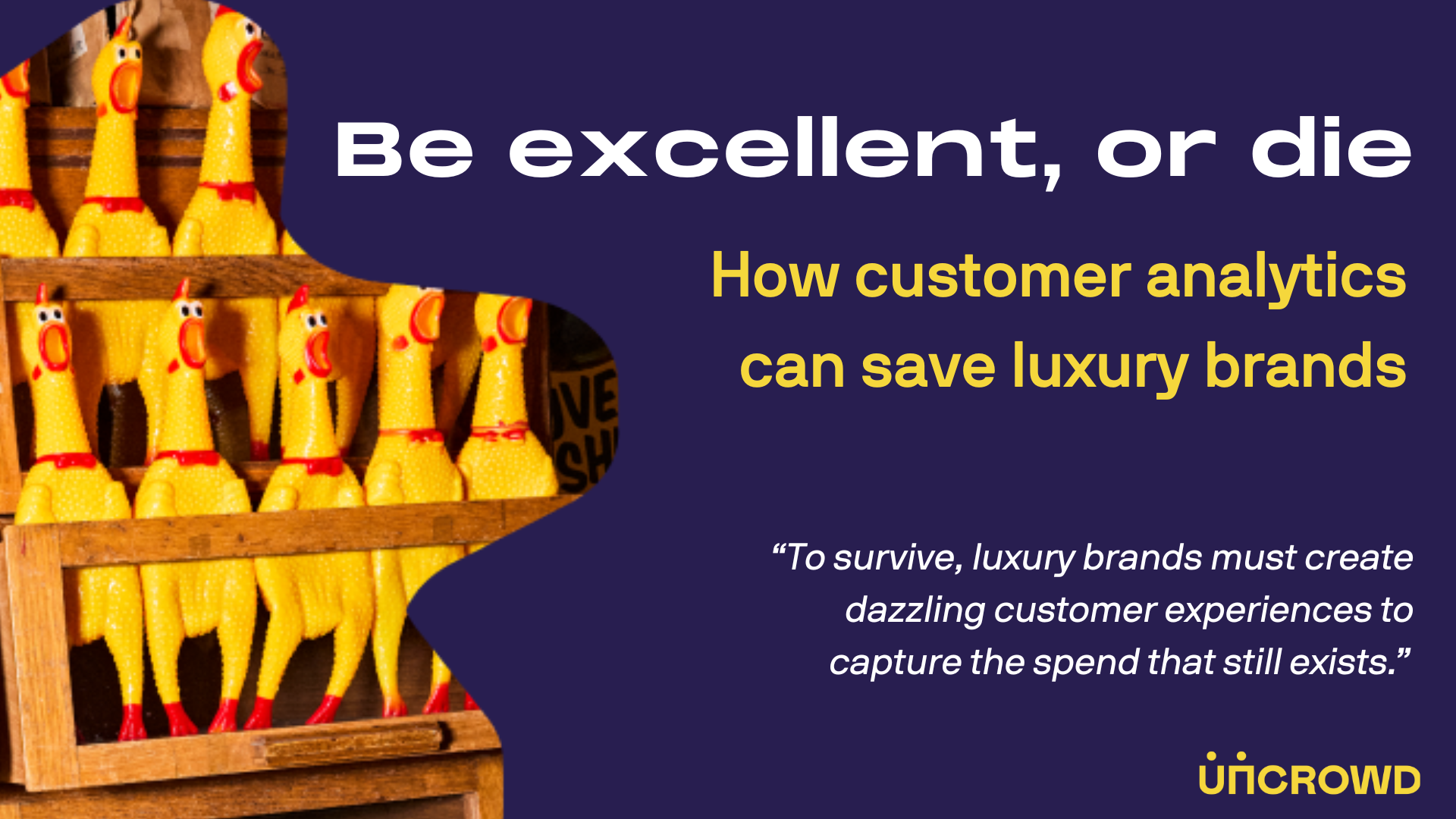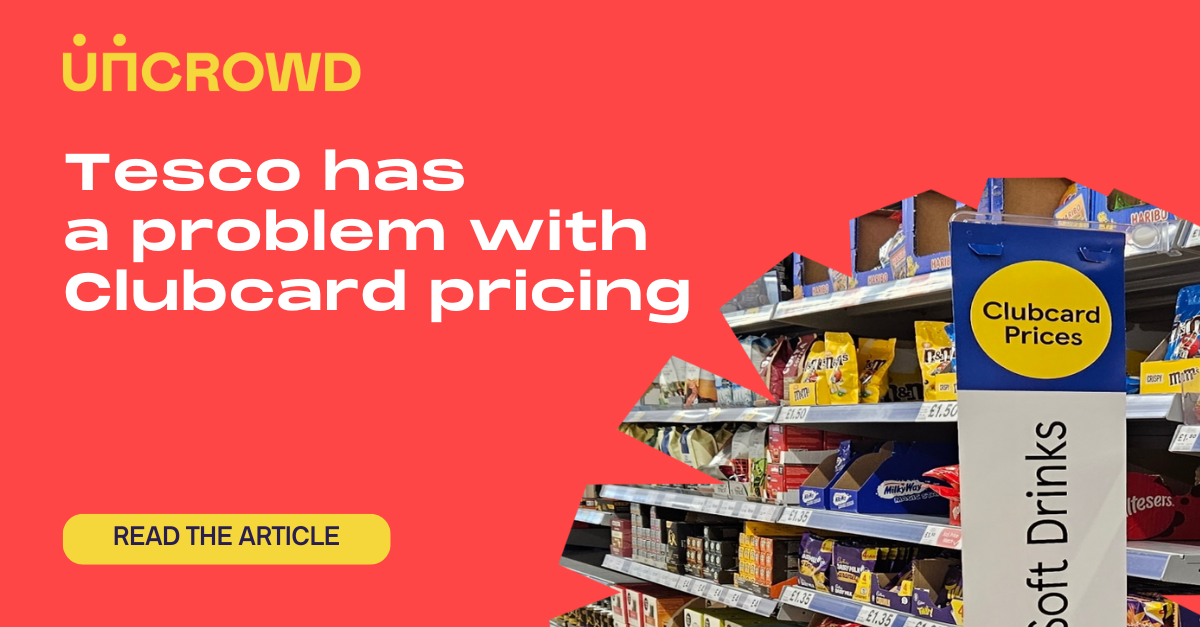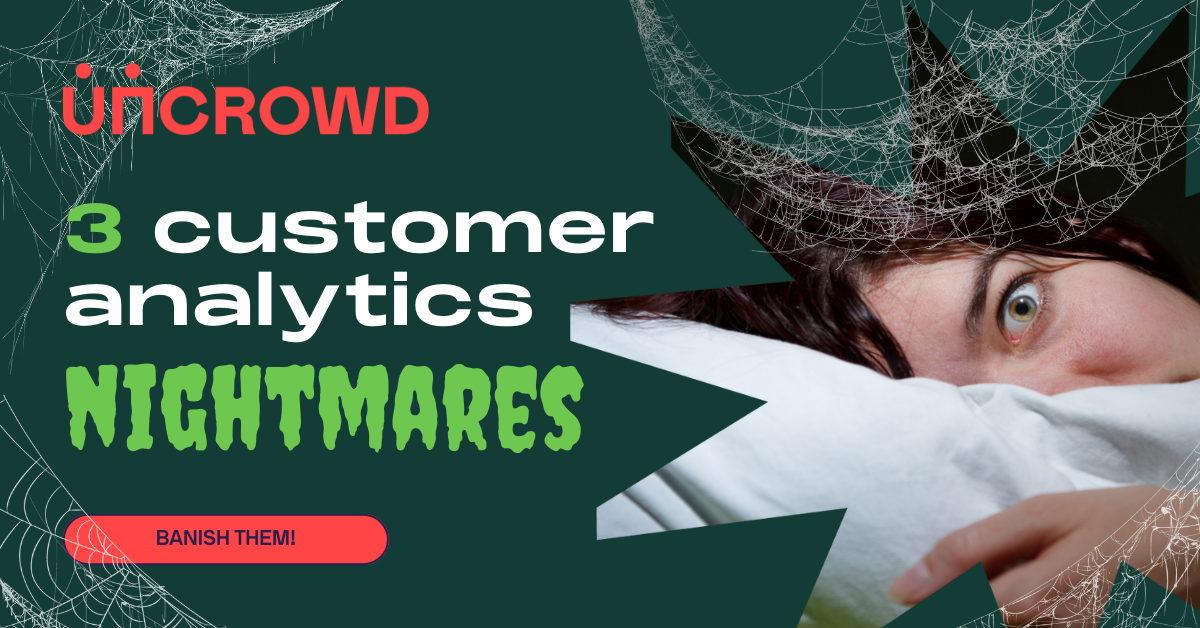The most important question in retail

In 1985 I got my first job in big retail. It was at the electronics and white goods chain Comet. I was 15, and having a blast selling TVs, stereos, car radios, cookers, fridges and, for some reason best known to Comet, gas fireplaces. Staff uniform was a butcher’s coat; a white coat meant you could talk to customers, a blue coat meant you couldn’t. That was the extent of our differentiated customer experience.
Our top seller of the late-’80s was consistently a 14” portable colour telly. All the electronics stores were selling these TVs. They started out at £159.99 everywhere in town. Then someone dropped it to £139.99 and everyone else would drop it to £139.99. Then £129.99 A week later it was £119.99 everywhere, then £109.99, then by 1990 £99.99.
It was weird, even to my teenage self. All that happened in the end was all the stores got £60 less for a TV than they had at the start. No one gained anything. There was no competitive advantage - it was just a case of who cut their prices first. The only winner was the customer with the cheap portable telly.
Standing in the store in my butcher’s coat watching people come through the doors to buy their new telly, when there were 18 other places in Oxford selling the same thing at the same price, I wondered, why? Why does that customer choose to come to us? Why don’t they choose another retailer? What is the difference?
Now, after 36 years in retail, on the shop floor then in the boardroom and on the consultancy side, I have remained obsessed with that simple question. To me, it’s the only question that retailers really need to ask.
Why do customers choose to come to us to buy? What makes us relatively more attractive?
Two levers, no advantage
Traditionally, we’ve been taught that the two levers we have to influence customer behaviour are price and choice. To attract customers, the conventional wisdom goes, you can cut prices, or you can offer a wider choice. Customer feedback will give you the same answer; customers tell us they want lower prices and more choice.
But if that’s all any retailer can do to attract customers, what’s the point? If you can slash the price of your 14” portable telly to £99.99, so can your competitor, and you both end up making less per telly. Where do you gain competitive advantage? If those are the only two levers, no one has the edge.
Relative Attractiveness
Of course, the truth is that price and choice are not the only two levers a retailer can use to influence customer choice. The reasons that customers were choosing to come through the doors of Comet in the 1980s were more subtle than that. For a complex set of reasons, Comet had made it self relatively more attractive than its competitors.
At Uncrowd we’ve given this metric a name; Relative Attractiveness, or RA. RA is a measure of how attractive your proposition is to a customer, relative to your competitive set.
We’ve identified over 50 other modifiers of customer behaviour, apart from price and choice, that influence whether a customer chooses you or a competitor. These levers include stuff like average travel to store, delivery convenience, curation and in-store inspiration.
(Note: a colour-coded system of butcher’s coats is not one of the levers.)
Infinite visibility of choices
Since my days in Comet, two major things have changed in the retail landscape. The first big change is that the customer now has a vastly expanded range of choice. And access to those choices is easy and safe. Customers can browse for a TV in a high street store, in a retail park, or visit any number of trustworthy websites with no risk to themselves until they find the model they want at the price they want in the timescale they want.
The customer is now in charge
The other major change is a power shift. When I started at Comet the retailer was the dominant player in its relationship with the customer. But today, the customer owns the retail relationship. With that infinite power of visible choice, it is trivially easy to choose away from Comet to, well, almost anywhere else in the world that sells TVs.
How to find your Relative Attractiveness
What these changes mean is that those 50 levers that influence your Relative Attractiveness are more important now than ever. They’re the tools you can use to entice customers to choose you, when they can so easily choose someone else instead.
So how do you analyse your Relative Attractiveness and identify the hidden levers in your business? You could guess at what levers might work, and maybe make some accurate guesses. But even good guesses aren’t reliable all the time. Or you could ask customers what they thought. But customer feedback is unreliable, because customers don’t know themselves what it is that influences them to make decisions.
Uncrowd’s customer analytics platform is the new metric that helps you find your Relative Attractiveness and identify those hidden levers. It can predicts what will happen when you adjust them so that you can make changes that will encourage customers to come through your door instead of going to your competitor.


